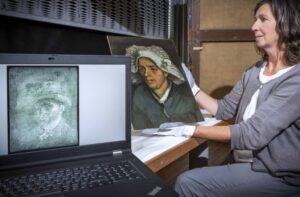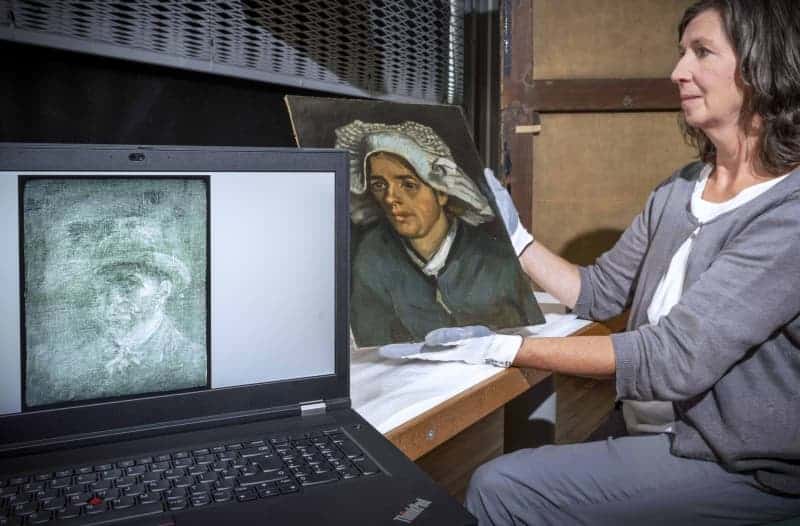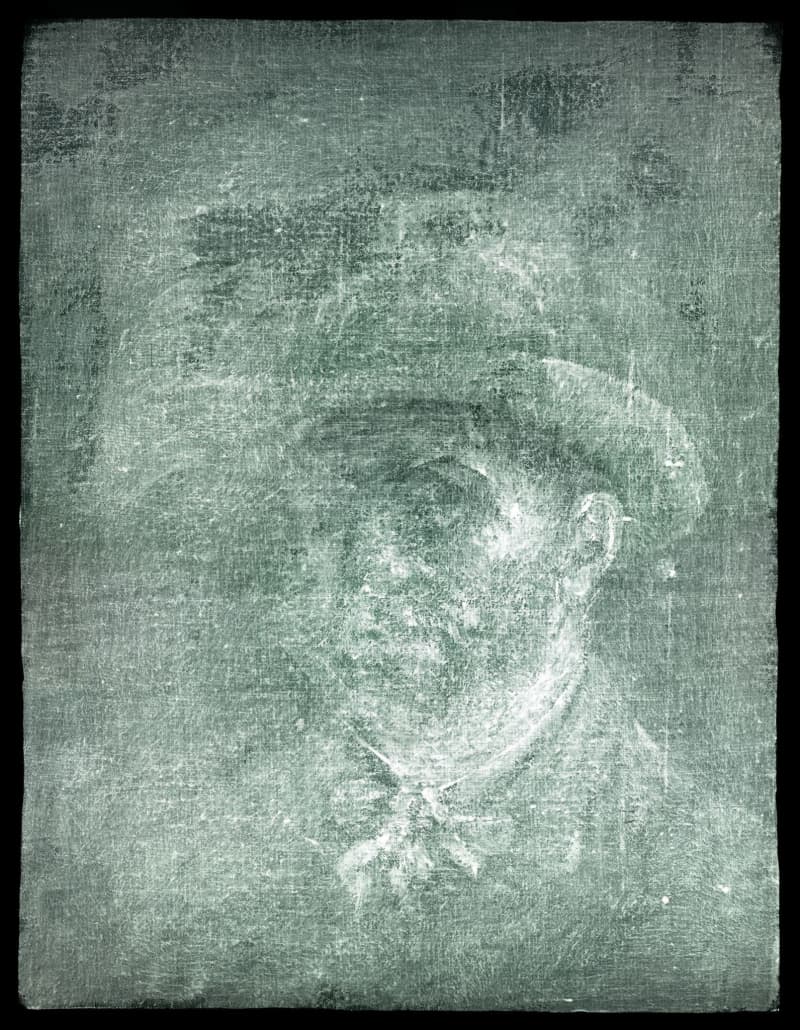
DPA

The Scottish National Gallery in Edinburgh is set to display a newly-discovered sketch that is widely believed to be an unknown work by Vincent van Gogh later this month.
The work shows a bearded man, his scarf loosely knotted, his face cast in shadow by the wide brim of his hat.
“Yes, you read that right,” the Scottish National Gallery wrote in a jubilant statement. “We have discovered what is almost certainly a previously unknown self-portrait by Vincent van Gogh.”
The art world is electrified by the image of the gentleman who gazes intently at viewers, thought to be by van Gogh, the famous Dutch painter who lived from 1853 to 1890.
The drawing was revealed when the gallery carried out a routine x-ray of Van Gogh’s “Head of a Peasant Woman” of 1885 ahead an exhibition, called “A Taste for Impressionism“. Featuring modern French art from Millet to Matisse, the show runs from July 30 to November 13.
The discovery of the van Gogh work was a complete surprise, the museum says.
It is on the back of the canvas the painter used for “Head of a Peasant Woman” and was covered by several layers of glue and cardboard that were likely applied around 1905 for an exhibition.
Van Gogh, who had little money, often used the back of canvases for new sketches and pictures. “That’s why pictures turn up from time to time, including self-portraits,” Cologne art historian and journalist Stefan Koldehoff told dpa.
The museum is now working out how far it could reveal the unseen work more fully. “It may be possible to uncover the hidden self-portrait, but the process of removing the glue and cardboard will require delicate conservation work,” the statement says.
For now, the world can enjoy the discovery through a ghostly and compelling x-ray image, in what curator Frances Fowle calls a unique gift for the cultural scene in Scotland.
The gallery has created a special light box to reveal the work which is behind the painting, in order to share it with viewers at the exhibition.
The artist’s left ear is clearly visible in the work, dating it to before 1888 when van Gogh cut it off.
The gallery believes it is one of his first attempts at a self-portrait.
However, the museum is reluctant to claim with 100% certainty that the sketch is a genuine van Gogh. It has consulted international experts but curators note that they are still only able to work with the x-ray image.
Van Gogh was not alone in using the back of canvases to paint, with others including Ernst Ludwig Kirchner (1880-1938), central figure of the Brücke artists also working in this manner.
However, critics have questioned the practise of presenting the back of canvases, saying this is in obvious violation of the artist’s will.
However, it is precisely such sketches and works rejected by the artist that are considered to be especially revealing.
And here, too, art historians are hoping to find clues. Van Gogh was highly experimental, especially in his Paris years from 1886 to 1888, says van Gogh biographer Koldehoff.
Contrary to what is often portrayed, he was by no means a lone wolf, but made friends in the French capital with Impressionists such as Camille Pissarro or Henri de Toulouse-Lautrec.
“His paintings became more impressionistic themselves, brighter, more colourful,” Koldehoff says. “If this possible self-portrait, which we so far only know as a poor black-and-white X-ray, comes from this period, it could also show how van Gogh was learning.”
But as long as the original work cannot be seen in full colour, that remains tantalising speculation.



Recommended Comments
There are no comments to display.